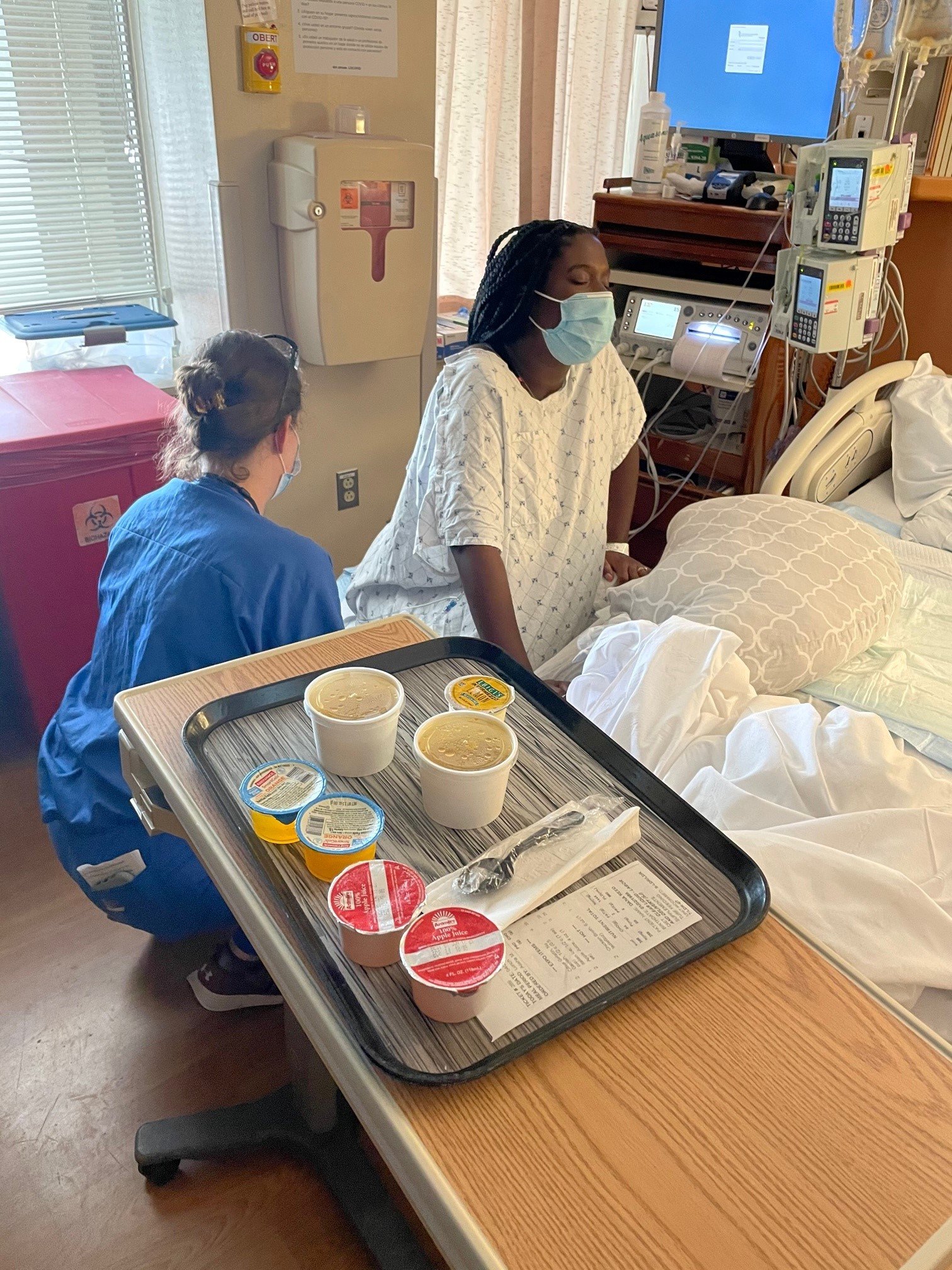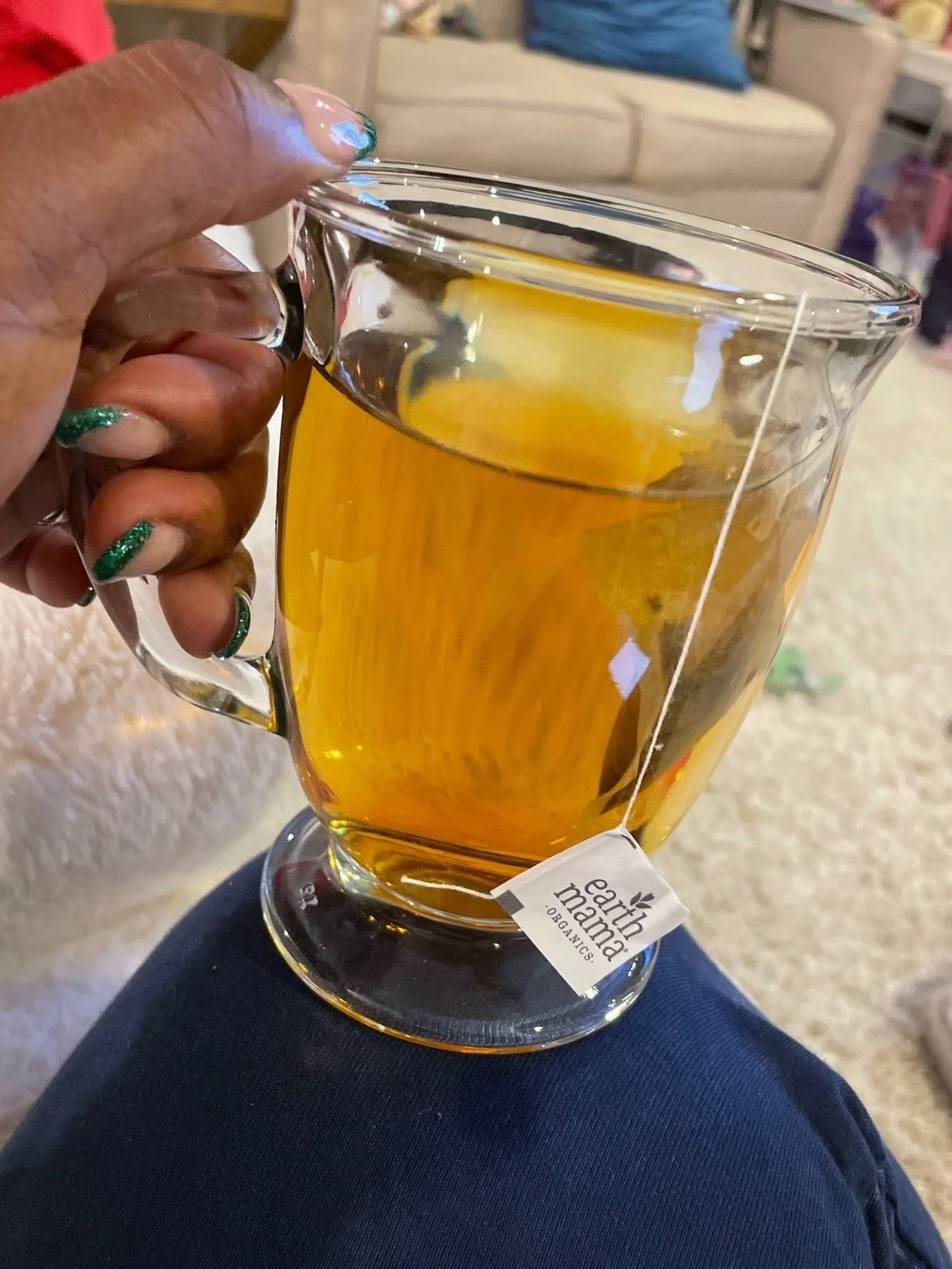Same as my 1st birth, I desired a vaginal delivery this time around as well. With my first, I was 41weeks and 4 days gestational age, and as some of you may know the medial protocol dictates 42 weeks gestation is the longest you can go in pregnancy before intervention is ordered. I delivered my oldest daughter via cesarean after 21 hours of laboring at home then going to the hospital for what I planned to be a water birth, turned prolonged / stress induced scenario which resulted in a c-section of a very large baby (10+ lbs). Read more about how my first birth unfolded HERE.
Coming into my second pregnancy I carried a greater sense of confidence and perspective on my healthcare needs and desires. I felt empowered to design my care plan and team to help me achieve the outcome desired, which was a low intervention vaginal delivery. The confidence I garnered I believe drove me to have a successful VBAC or Vaginal Birth After Cesarean.
To be clear, I knew NO ONE in my immediate circle of relatives/friends/IG friends that were successful with a VBAC or even attempted one, so like most things Black women experience in life I was in a situation not designed to support my unique needs because there are not enough examples to leverage. Its widely known in the medical community that women of color have higher cesarean rates and lower VBAC rates than Caucasian and Hispanic women, so why is that? I wish I had other women that headed down this path to learn from their experience. For me, the recovery from my c-section was so traumatic I couldn’t stomach the thought of reliving that pain or trauma, so I knew a VBAC would be the only way.
why consider a vbac? – here’s a condensed list of benefits for a vaginal delivery after a c-section:
- Avoids major abdominal surgery (DING DING!)
- Shorter recovery
- Decreased risk of bleeding or infections
- Benefits for future pregnancies
Understanding the risks associated with this type of delivery is key as well doing your research, the most common of them being a uterine rupture. Admittedly, I never mustered up the guts to Google what this actually looks like, instead I focused my attention on ways to improve my odds by maintaining a good diet, staying active and formulating my dream birthing team +toolbox.
There was one thing I was fearful of, having another large baby AND tearing to the point I didnt know was possible, so what did I do? I opted for a growth scan at 38wks to get an idea of babys size (while still an approximation, I felt it was fact-based enough) and then scheduled my induction for wk 39 to minimize the baby growing north of 9 pounds. While an induction was something I was willing to try (given my previous history of having a larger than average baby); I was only willing to try non medicated practices first. [I should note that one practice I did throughout this pregnancy was acupuncture]
Upon check-in on induction day I came into the L&D as you normally would if active labor were happening, got placed in my suite and began the monitoring of our heart rates via external monitors. The plan was to start with the Foley bulb insertion to see if that could accelerate my dilation to 3-4cm.
what is a foley bulb induction?
A Foley bulb induction is a procedure where your doctor insets a catheter into your cervix. One side of the catheter is deflated. Once inside your womb, your doctor inflates the balloon with a saline solution. This puts pressure on your cervix and encourages dilation. The catheter falls out once your cervix dilates to 3 centimeters. In many cases, this method successfully stimulates labor without medication. – Healthline.com

The Foley Bulb was inserted at this time and the nurse was increasing the saline solution to expand the balloon which was stretching my cervix to dilate.
In my case it didn’t work, so I consulted with my Doula who was attending the induction, along with my husband and we made the decision to leave the hospital and return home to allow my body to continue contracting naturally with the hopes for spontaneous labor to occur.
Talk about taking care into your own hands...it was the only way I saw not going to the Operating Room for another cesarean. I had to leave and it was the BEST decision I could’ve made. I listened to my body and my baby – and neither were ready to labor, so I went home to rest for 3 days. During that time I made an emergency appointment with my acupuncturist to dial up the intensity of my treatment to encourage contractions. We met on a Saturday morning for treatment and on Monday, May 3rd at 9:54pm (my actual due date) Miss Blake Carrington Reed was BORN! 9 pounds and 1 ounces of suga!
i would not have achieved my vbac without the following things in my birthing toolbox:
My Doula – I searched long and hard for my Doula, we hired a team of Doulas for our Birth with Bellamy and did not have a pleasant experience during delivery and post-partum, but luckily this time around I knew the right questions to ask and more importantly I knew the type of energy and vibe I needed on my “welcome committee” and Tiara Cadwell was that. Shes the owner of Crowned & Cradled and founded her practice after her traumatic birth. Shes also a successful VBAC mama!
Seeing an acupuncturist as early as recommended by your medical specialist. I highly recommend exploring, it was such a stress reliever for me during prenatally, allowed me to connect with my baby and really get in tune with her.
My insurance covered up to a certain number of visits for my prenatal care (this was a bonus)
Have a committed partner/friend/parent that can act as physical support and moral coach. My husband wasn’t the most intuitive person when it came to my needs as a pregnant woman because this pregnancy I was a lot more mobile, comfortable and overall pleasant, but anything I asked of him in preparation he was down for. We read a lot of research on the approach of VBAC and risks together, listened to recordings of affirmations together and practiced all the spinning babies positions to get my body labor ready!
Delivery day was so awesome, I got to be fully awake, present and CALM for her arrival. We listened to music, had my tealight candles going and all the essential oils for rubbing and smelling. My favorite part of the day was when I got to place my hand below to hold Blakes head as she came out, and then see my husbands face when he announced we had another beautiful girl!
OH! Another special thing about Blakes birth was that we didn’t want to know her gender, mainly for the element of surprise and excitement we garnered in anticipation. So, it brought me to tears to hear she was a girl! We were 90% certain she was a boy because of how well I was doing prenatally, compared to my pregnancy with Bellamy.
I wouldn’t trade the entire experience for anything, even in the light of uncertainty with the initially scheduled induction. I had a plan, it didn’t go as expected, but what I took away was to trust what my body was designed to do and to focus on the inner work.
if you’re interested in a vbac here are some questions you should ask your medical provider:
- the doctor’s office will refer you as a TOLAC patient since you are pursuing this type of delivery, but not actually had a successful VBAC.
- Discuss with your medical provider as early as possible if this is what you want
- During the TOLAC consult you will meet with an OB (this was unique for me as my regular provider was a midwife) luckily my practice has both Midwives and OBs.
- What is your success rate for VBACs?
- What are my options for non-medicated inductions, if needed
Learn more and hear more stories! Black Women Do VBAC is a great site full of more information, studies, and stories of Women of Color who have had VBACs. The more you know, the more you realize that something needs to change!
did you know?
Sweet Crowns Co. is a product company which creates beautiful convenient solutions for babys’ hair protection and is my passion, but its existence fuels my purpose. Being founded by a Black Mother of two, its my duty to champion and create change for other Black mothers given the disparities Black women face giving birth in the U.S.
Black expectant mothers face significant disparities in care during and after childbirth.
The care gap has created a system where Black moms are dying at 3-4x the rate of White women –with 60% of these deaths being preventable.
That’s why we give 3% of our profits to frontline organizations fighting the Black maternal heath crisis nationally. Your purchase of any Sweet Crowns Co. product will improve a Black womans’ journey to motherhood.















